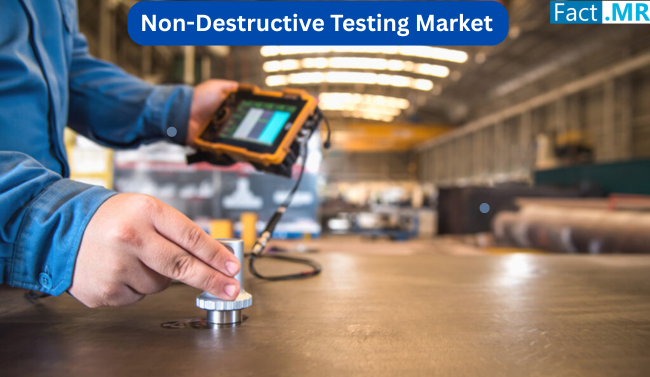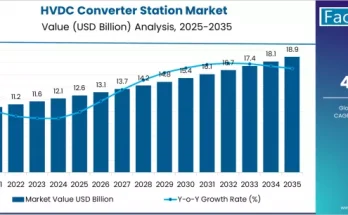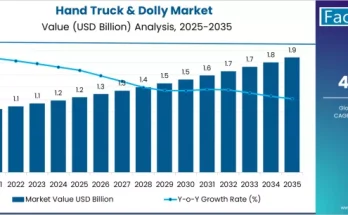Non Destructive Testing (NDT) has become a quality assurance necessity in all industries. As the world’s industries increasingly concentrate on safety, efficiency, and regulatory compliance, Non Destructive Testing is now at the heart of maintenance strategies, production processes, and asset management. Across aerospace and oil & gas, infrastructure and energy, industries are relying on Non destructive testing to determine the integrity of materials, components, and systems—without damaging or compromising functionality.
This increasing emphasis on preventive maintenance, operational reliability, and safety assurance is fuelling huge interest and innovation in the world of Non destructive testing. Non destructive testing not only reduces risk but also leads to sustainable processes by prolonging equipment life and reducing wastage of resources.
Non Destructive Testing Market Overview
Non destructive testing is a broad range of inspection methods applied to assess the physical and structural properties of a material without compromising its utility. These methods enable the detection of flaws within and on the surface of a material, as well as assessing material thickness, structural composition, and wear and corrosion monitoring.
The Non destructive testing industry is experiencing a transition from traditional techniques towards innovative methods that are more precise, faster, and automated. Due to the increase in Industry 4.0, digital transformation and intelligent manufacturing are also leading to faster acceptance of Non destructive testing tools combined with AI, IoT, and machine learning.
Drivers of the market are:
- Increased infrastructure development and industrialization.
- Focus on production process quality control.
- Regulations for safety and the environment.
- Aging assets in oil & gas and energy industries.
- Implementation of automated and remote inspection systems.
Non Destructive Testing Market Technology Landscape
The Non Destructive Testing ecosystem consists of a wide range of techniques, each appropriate for various inspection requirements:
- Ultrasonic Testing (UT): Widely applied for detecting internal flaws, measuring thickness, and weld examination. This method is dominant in aerospace and manufacturing industries.
- Radiographic Testing (RT): Uses X-rays or gamma rays to inspect internal flaws. It is very accurate, especially for critical structure components.
- Magnetic Particle Testing (MPT): Best suited for inspection of surface and near-surface discontinuities in ferromagnetic materials, widely applied in the automotive and rail industries.
- Eddy Current Testing (ECT): Well suited for inspection of conductive materials, often applied in aerospace and electronics.
- Visual Inspection: One of the oldest and most elementary approaches, commonly supported by robotic systems and computer vision image analysis.
- Acoustic Emission Testing: Used to detect the emission of energy from stressed materials, commonly utilized in pressure vessel and pipeline inspections.
Robotics, drones, and software analytics combined are revolutionizing the future of NDT, offering remote inspections and real-time decision-making.
Non Destructive Testing Market Regional Insights
The Non Destructive Testing industry is world-wide spread, with various regions playing distinctively towards its growth and uptake.
- North America is a leader, spearheaded by mature industries and strict compliance laws. The region’s focus on employee safety and infrastructure upkeep drives sustained investment in Non destructive testing solutions.
- Europe comes next, boosted by its powerful manufacturing industry and regulatory focus on environmental and structural standards. Western European countries are especially keen in embracing state-of-the-art Non destructive testing technologies.
- Asia-Pacific is becoming a principal growth area driven by industrialization, rising infrastructure investment, and heightened awareness of quality assurance. Growth in sectors like shipbuilding, automotive, and energy production in China, India, and Southeast Asia is fueling regional market momentum.
- Latin America, the Middle East, and Africa are also progressing steadily, especially in oil & gas and mining use, where equipment integrity is critical to safety and efficiency.
Key Industry Trends
The Non Destructive Testing market is shaped by a number of revolutionary trends:
- Digital NDT Solutions: Cloud-based solutions and digital documentation allow for effortless data access, improved traceability, and collaboration among inspection teams.
- AI and Predictive Analytics: Machine learning algorithms are being employed more and more to detect trends in inspection data, facilitating predictive maintenance and failure prediction.
- Remote and Automated Inspections: Robotic arms, crawlers, and drones make inspection possible in inaccessible or dangerous locations, enhancing safety and minimizing human interaction.
- Integration with Digital Twins: NDT data is also being input into digital twin platforms, enabling real-time visualization and simulation of asset performance and health.
- Training and Certification Evolution: The growing intricacy of methods and equipment is reconfiguring the skill set, with growing focus on up-skilling and multi-method certification.
- Sustainability Objectives: Through early detection of faults and prolonging the life of assets, Non destructive testing supports environmentally sustainable manufacturing and maintenance.
Applications and End-Use Forecast
Non destructive testing is applied across a wide variety of industries, each having its own set of needs and challenges:
- Aerospace: Maintenance of structural integrity of aircraft parts is essential. NDT is applied throughout the life cycle of the aircraft—production to regular maintenance.
- Oil & Gas: Refineries, offshore platforms, and pipelines are subjected to heavy stress and corrosion. NDT assists in monitoring structural condition and averting catastrophic failure.
- Power Generation: NDT aids in the reliability of turbines, boilers, and nuclear equipment, and is important for both conventional and renewable power sources.
- Construction and Infrastructure: Buildings, bridges, and rail systems need regular inspections to provide public safety and regulatory compliance.
- Automotive: Non destructive testing methods assist in quality control on production lines and confirm the strength and safety of structural parts.
- Manufacturing: From welding and casting to assembly, NDT is incorporated into quality assurance systems throughout metalworking and fabrication industries.
- Defense and Maritime: The naval and military industries utilize non destructive testing to ensure equipment reliability, structural testing, and readiness for missions.
Regulatory and Safety Considerations
Regulatory requirements from across the globe contribute significantly to framing the non destructive testing environment. Industries are required by many to abide by international standards—e.g., ISO, ASNT, ASTM, and EN. They prescribe testing practice, personnel certification, and documentation procedures.
In safety-critical environments such as nuclear energy and aviation, adherence to non destructive testing protocols is not just about compliance but also a basic aspect of risk management. Planned inspection and certification audits are usually mandatory under the regulations, increasing the need for secure testing technologies and qualified personnel.
Future Outlook of
With advancing industries and rising prominence of technological convergence, the future of NDT is smart, automated, and integrated. Advancements in material science, AI, and real-time analytics will change the way inspections are done and the way data is analyzed.
The Non destructive testing market in the next few years will see:
- Increased integration with smart factories and industrial IoT ecosystems.
- Increased use of AR/VR-based inspections for visualization.
- Collaborative initiatives between technology vendors, certification organizations, and end-users to develop standardized digital practices.
- A move toward service-based models, where Non destructive testing is presented as a managed offering instead of a discrete activity.
Conclusion
The Non Destructive Testing industry is destined to be a central driver in the industrial future of safety, efficiency, and sustainability. With companies increasingly turning to data-based maintenance and quality control practices, NDT will continue to be a primary driver of reliability and regulatory compliance. Through advanced technology, expert expertise, or cross-industry networks, the rise of the industry will be governed by its capacity to evolve, innovate, and maintain the utmost standards of structural integrity.
For organizations seeking to stay ahead, embracing the latest NDT innovations and insights is no longer optional—it is essential.



